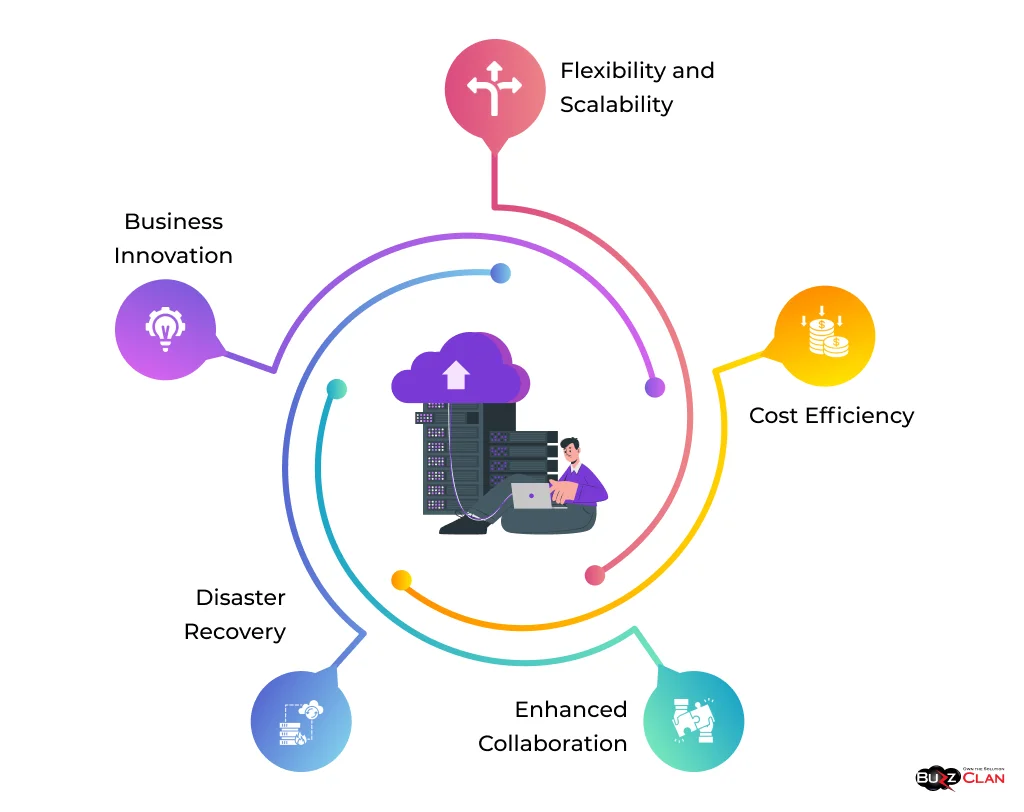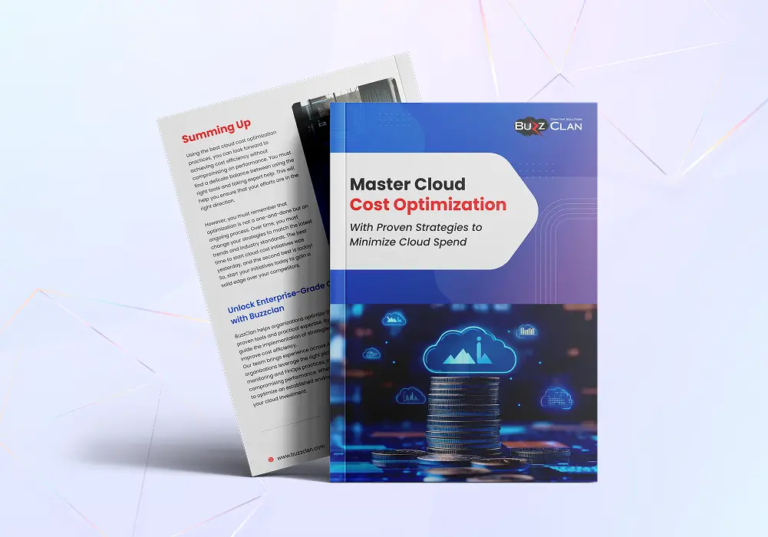Navigating the Clouds: A Comprehensive Guide to the Advantages and Disadvantages of Cloud Computing
Shubham Kumar
Aug 16, 2024
Introduction
Cloud computing has emerged as a transformative paradigm empowering innovation from startups to Fortune 500s. However, despite immense momentum, prudently evaluating trade-offs remains imperative for technology leaders navigating adoption choices that equally impact scalability, economics, and operational continuity.
This comprehensive guide will explore the pros and cons of cloud computing models like IaaS, PaaS, and SaaS, along with public, private, and hybrid deployment options. We’ll traverse real-world benefits and limitations faced, providing balanced perspectives across cost, security, flexibility, and use case fitment.
By the end, you will have clarity regarding suitability factors guiding cloud adoption decisions specific to your application and organizational circumstances.
Understanding Cloud Computing
Cloud computing refers to delivering computing services over the Internet rather than from on-premise data centers. Instead of buying hardware and software, users access technology resources owned and maintained by cloud providers.
Leading services include:
- Infrastructure as a service (IaaS) providing fundamental compute, storage, and networking resources
- Platform as a service (PaaS) with fully managed app development and deployment environments
- Software as a service (SaaS) delivering complete business applications like email, conferencing tools or ERP
Deployment models include:
Public cloud using shared infrastructure maintained by providers like AWS, Microsoft Azure, and Google Cloud.
A private cloud dedicated to a single organization, either internally or externally operated Hybrid cloud combining public and private environments linked together.
The Bright Side – Advantages of Cloud Computing

Cloud computing confers immense advantages driving mainstream enterprise adoption:
Flexibility and Scalability
The ability to dynamically scale capacity up and down through on-demand resource allocation and pay-per-use economics matches spending directly to workload needs.
Cost Efficiency
No upfront capital expenditure on hardware and data centers and variable spending tied to actual utilization reduces TCO by over 30% compared to on-premise setups.
Enhanced Collaboration
Universal content accessibility from anywhere on internet-connected devices using cloud file sharing and productivity apps assists coordination across globally dispersed teams.
Disaster Recovery
Distributed resilient cloud infrastructure minimizes disruption threats from localized outages. Instant failovers, along with data backups, geographically simplify disaster recovery.
Business Innovation
Access to cutting-edge IoT, AI, and blockchain capabilities helped build innovative apps, giving a competitive advantage without massive upfront investment.
Here is a draft section woven into the advantages and disadvantages of cloud computing blog post on the benefits of cloud computing:
Exploring the Benefits of Cloud Computing
The meteoric rise of cloud adoption stems from several compelling benefits applicable across industries:
Cost Savings
The cloud eliminates large upfront capital expenditures on hardware and data centers to provide traditional IT infrastructure. Instead, flexible consumption-based pricing adjusted to actual usage optimizes spending. Shared resources lend economies of scale.
Scalability and Agility
Cloud enables dynamically adjusting compute power, storage capacity, and network bandwidth to match application workload requirements as they evolve precisely. Quickly spinning capacity helps meet seasonal traffic spikes, new feature demand, and rapid data growth at any time.
Accessibility and Collaboration
Universally accessible over internet connectivity, the cloud facilitates much easier content distribution and collaboration across globally dispersed teams, remote workers, and external partners through real-time data synchronization and software interfaces usable from any authorized device.
Business Continuity
Built-in data backups, infrastructure distribution across data centers, and rapid failover mechanisms impart significant business continuity capabilities, allowing cloud platforms to promise higher uptime than on-premise systems prone to disruptions from localized outages or degradations.
Innovation Velocity
Keeping pace with cutting-edge technology access gives a competitive advantage. Cloud removes upfront deployment costs and skillset barriers regarding leveraging innovations around IoT, AI/ML, and Blockchain compared to on-premise solutions needing steep investments.
The Flip Side – Disadvantages of Cloud Computing

Despite immense potential, cloud usage poses some downsides to evaluate:
Dependency and Business Disruption
Heavy reliance on internet connectivity and provider uptime outside enterprise control risks outage-triggered productivity losses and transactional application gaps that are hard to bridge temporarily.
Security and Privacy Challenges
Public cloud shares underlying hardware with other tenants, bringing vulnerabilities from multi-tenancy protections compared to fully isolated private data centers. Strict access controls are mandatory to secure sensitive data.
Limited Customization Ability
Multi-tenant SaaS apps limit tailoring to customer needs. Even IaaS/PaaS lacks integration complexity feasible on-premise through connecting legacy systems, though APIs and microservices help.
Unpredictable Costs
Pay-per-usage pricing varies drastically based on peak traffic, storage needs, and data egress beyond regions. Careful cost modeling, monitoring, and allocation are needed to control budgets.
Cloud Computing Across Sectors
Unique use cases demonstrate cloud advantages balancing tradeoffs contextually:
Cloud-Based Business Operations
CRM, marketing analytics, file sharing, video conferencing, email, and other horizontal SaaS apps improve workforce productivity, customer experience, and interconnectedness.
Healthcare Innovations
Telehealth, medical imaging archives, genomics processing, and hospital scheduling systems benefit from the cloud’s scalability, redundancy, and accessibility. Compliance ensures security.
ERP Transformations
As mega-vendors SAP, Oracle, and Infor shift enterprise resource planning suites to the cloud, customers gain real-time, on-the-go business insights using a browser and mobile access across global subsidiaries.
Hybrid and Mobile Environments
As legacy systems migrate gradually, the hybrid cloud allows conditional workload placement across on-premise and cloud platforms, optimizing for security, data gravity, or scale needs dynamically while retaining flexibility.
Making the Decision – Is Cloud Computing Right for You?
Evaluating business application migration suitability factors helps determine ideal environments:
Data Sensitivity and Compliance Factors
Heavily regulated workloads like finance and healthcare necessitate private cloud usage constraints, given risks of multi-tenancy exposure, geographic restrictions around data domiciling laws, and insider threats to highly sensitive IP.
In-House Cloud Expertise Available
Lack of cloud ops skills and learning curves using IaaS self-service portals delays lift-and-shift application mobilization. Managed IaaS and PaaS services successfully circumvent barriers.
Current Infrastructure Equipment Lifecycles
Transition urgency depends on whether refreshed hardware budgets accrue savings investable into new cloud-optimized application re-architecture, such as decoupling monoliths into containerized microservices, better-harnessing cloud autoscaling, and DBMS strengths.
Strategies Mitigating Cloud Disadvantages
Prudent cloud risk management tactics involve:
- Seeking SLA guarantees for uptime from vendors
- Enabling multi-region redundancy and backup mechanisms
- Testing restoration procedures systematically using simulated failover testing
- Budgeting for egress traffic surges during seasonal peaks or usage spikes
The Future of Cloud Computing
Ongoing innovation around blockchain-based decentralized infrastructure, confidential computing using encryption, and quantum-safe security will alleviate adoption barriers for highly regulated industries to harness cloud reliably going forward.
Meanwhile, expanded connectivity reach through 5G and edge delivery models extend online availability zones deeper locally, minimizing disruption risks when network reliability remains continuously inadequate globally.
Conclusion
In closing, judiciously evaluating key advantages against shortcomings contextually for each application’s characteristics and weighing the alternatives remains imperative to maximize the cloud’s upside while minimizing its drawbacks during your modernization journey. What trade-offs have you wrestled through? Which ones needed navigating in your domain? Please share experiences that resonate.
FAQs

Get In Touch
Follow Us

Get In Touch
Follow Us
Table of Contents
- Introduction
- Understanding Cloud Computing
- The Bright Side – Advantages of Cloud Computing
- Exploring the Benefits of Cloud Computing
- The Flip Side – Disadvantages of Cloud Computing
- Cloud Computing Across Sectors
- Making the Decision – Is Cloud Computing Right for You?
- The Future of Cloud Computing
- Conclusion
- FAQs








